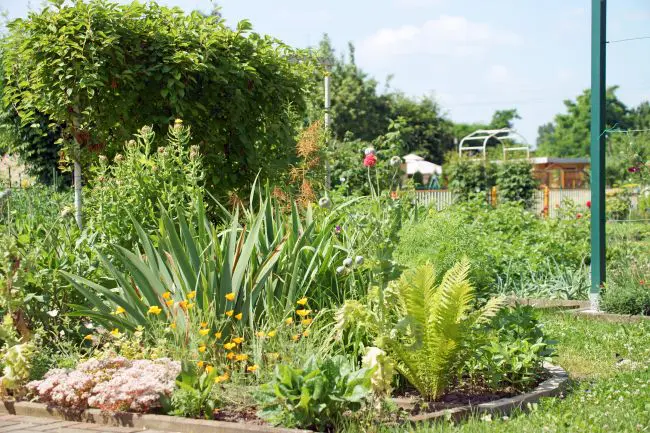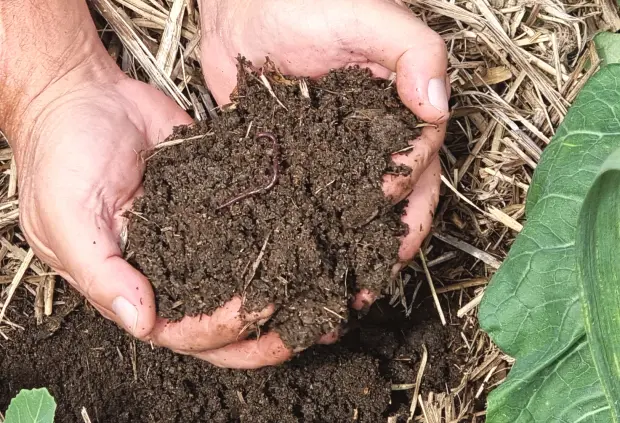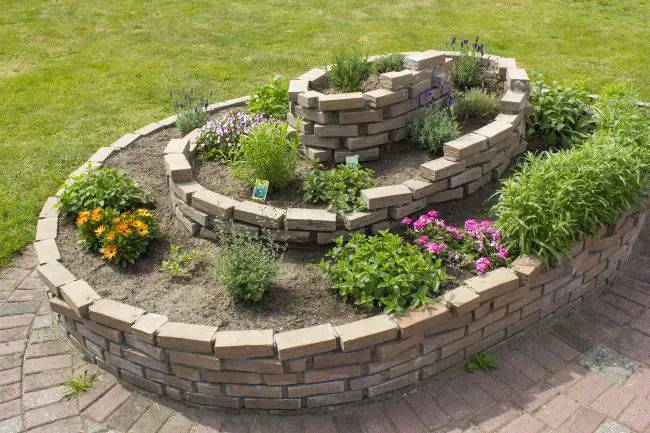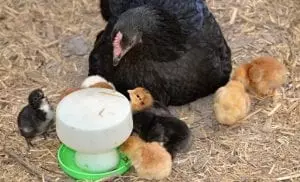A guest post authored by Lauren Schwartz of www.lawn.com.au
There’s more to self-sufficient gardening than ornamental plants and decorative sculptures. A productive garden is a healthy garden, and one that can lead to an excellent life goal: self-sufficiency!
By growing your own food and in the process caring for nature, you can make the land you own productive and reap the benefits of your efforts.

Self-sufficient gardening is a means of sustainable living, and involves growing your own food while working with nature. Getting outdoors into nature & growing your own food can have a positive impact on your health and wellbeing. Familiarise yourself with your gardens microclimate and growing conditions. Think about where the sun hits, where the shaded areas are, where the water runs off and what the topography is like, then build from there.
It may feel like a lot, but self-sufficient gardening is ultimately about integrating your garden with the natural environment and working closely with nature. It allows you to provide for yourself and your family while giving back to the earth that feeds us.
Ready to start self-sufficient gardening? Then let’s get into it!
Tips for Self-Sufficient Gardening
Soil is the basis of everything in your garden, and influences how well your plants grow. Start by building up your soil to boost its vitality and health. Adding compost and mulch are simple ways to improve your soil both before and during planting.

Save your seeds or kitchen scraps for re-growing. Choose heirloom varieties that you can reseed every year.
Minimise your waste by recycling and reusing as much as possible. This includes things like water and other materials you use to grow your plants.
DIY what you can, and use the assets you have at your disposal. Online groups and marketplaces can be great sources for free or low-cost items. Community gardens, seed banks, local libraries and gardening groups might also be useful avenues to explore.
Remember that self-sufficiency is a lifestyle. There’s more to it than just growing your own food. It’s also about growing as a person. Don’t try to restrict yourself to certain rules- rather, work with what you have. Be open to changes and trying new things, but start within your comfort zone.
Self-Sufficient Gardening Projects for Beginners
The concept of self-sufficiency and the work involved in transitioning your garden can feel overwhelming for a beginner- and that’s understandable. So if you’re just beginning to look into self-sufficiency in terms of food and gardening, here are some great ways to get started.
Plant a herb garden. Keep it simple and start small. Whether it’s some rosemary in a tiny pot or microgreens in a seedling tray, this is an excellent and uncomplicated way to take your first step into self-sufficiency. For those more ambitious, a herb spiral like the one below would be a satisfying project to complete.
Culinary herbs will be useful in cooking, so look into thyme, rosemary, oregano, and chives. Australia has native varieties of herbs like basil and mint, which have the added benefit of being indigenous and therefore well suited to the growing conditions down under.
Medicinal herbs such as yarrow, lavender and wormwood will be useful in DIY home remedies and personal care products. These long-lived perennials are not only attractive in the garden but can be used in future self-sufficiency endeavours.

Create a Garden Bed
You can install a raised garden bed or Hugelkultur bed in a corner of your yard, or build a garden straight in the ground. Either way, this is a great way to start transforming your yard into a productive garden. You can then start with no-dig gardening, which has many benefits and takes advantage of a plants natural food cycle.
After, that, consider what you want to grow. Few things feel more rewarding than eating food you’ve grown yourself. Some good fruits and vegetables to sow include peas, lettuce, garlic, potatoes, carrots and tomatoes. These foods are easy to grow, highly productive yet expensive to buy in shops- so you’re winning all round by growing them yourself.
Make Your Own Compost
To improve soil structure, health, & moisture-retaining qualities, you can add compost or mulch. Check local resources to see if they can provide compost for your garden, or go DIY, and make it for free. Set up a compost bin or pile in a corner of your yard. Things like grass clippings and dead leaves, shredded paper and kitchen scraps can be added to make a rich soil improver once its broken down. A local gardening service can help maintain your yard and even provide extra compost ingredients for you.
Use Water Wisely
We need to be mindful that water is a valuable resource for plants, animals and humans alike. Because of this we need to think of ways to conserve and recycle the water available to us so it doesn’t go to waste.

In the garden, this can be done in a variety of ways. You could set up a greywater system, align garden beds with the natural topography such as setting up swales, and install water tanks. Consider providing a bird bath or pond for wildlife to rest and have a drink. This may create a great visual in the garden as well as attracting beneficial insects.
Rework Your Garden
It may be hard to let go of a well-manicured lawn, but it does take plenty of resources and effort to maintain. You don’t have to give it all up, or at least, not all at once. Start small by transforming parts of your garden into more productive spaces. Just remember that self-sufficiency also involves flexibility and working within your capabilities. It may feel like plenty of change, but working on one project at a time and making small lifestyle changes goes a long way towards self-sufficiency. Once you’ve experienced how rewarding it feels to have a productive and self-sufficient garden, you’ll only want to do more!














One Response
Hi Mark,
My name is Dayamitra. I’m Karmamitra’s wife (Karma for short).
Both my husband and I have been watching your YouTube channel and think it’s awesome! My husband and I are also weaver’s along with trying to grow what we can in the garden. Part of our quest for as much self sufficiency as possible is to weave fabric and weave the things we need for the home and sell what we can to buy more yarns to keep weaving. We have an 8 shaft floor loom and I love learning more of the techniques and patterns of weaving.
We grow soapwort to add to our shampoo to save.
The recipe for mulberry pie is a favourite for us. We have a good size mulberry tree that has given us thousands of mulberries this year.
We have built the frame you showed on YouTube to shade our garden for summer.
We pressure can. We preserve and make our own jams and sauces and dehydrate to make fruit roll-ups. We haven’t bought jam or sauce for years and have now added cordial to that list. We hope that, between our garden and weaving (hopefully I can upskill and sew our own clothes), we can be as self sufficient as possible – especially the way things are at the moment.
Thank you for all your help! Keep up the good work!